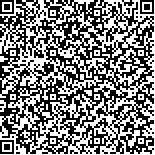下载中心
优秀审稿专家
优秀论文
相关链接
摘要

矿物识别是高光谱遥感技术优势之一,已在地质矿产领域取得了显著应用效果。随着光谱分辨率的不断提高,高光谱遥感矿物识别逐渐从识别矿物种类向矿物亚类、矿物成分等精细信息识别发展,且随着应用实践的不断深入,对矿物精细信息的需求也越来越大。而光谱分辨率和矿物识别方法是制约高光谱矿物精细识别的主要因素。高分五号(GF-5)超高的光谱分辨率为矿物精细识别提供了可能。首先在分析总结已有高光谱矿物识别方法优缺性的基础上,提出了综合光谱特征增强匹配度和特征参量的矿物识别方法;其次,选取甘肃柳园和美国Cuprite两个研究较多的地区为研究对象,基于GF-5卫星数据开展了矿物精细识别,在完成矿物种类、亚类识别的基础上,进一步对绢云母成分信息进行了反演;最后,结合上述地区已有机载高光谱数据及填图结果开展对比分析。结果表明:GF-5矿物识别信息分布与机载HyMap、AVIRIS一致性很好,相较机载数据GF-5矿物识别平均正确率优于90%,说明本研究提出的矿物识别方法能够满足GF-5矿物精细识别,可为后续业务化应用提供技术支撑,同时认为超高的光谱分辨率使得GF-5在矿物成分信息识别上更具优势。
Mineral identification, which is a feature of hyperspectral remote sensing technology, has been widely applied in geoscience and has achieved remarkable application results in geological and mineral fields. With the improvement of spectral resolution, mineral identification has gradually developed from the identification of mineral species to the identification of fine information, such as mineral subclasses and mineral components. Fine mineral information is extremely important in applications, such as the prediction and evaluation of mineral resources and geological environment indication. It directly affects the breadth and depth of hyperspectral remote sensing geological application. Spectral resolution and mineral identification methods are the main factors in fine mineral identification. GF-5 has 330 bands at the spectral range of 350—2500 nm, and its spectral resolution is higher than 10 nm. Its ultrahigh spectral resolution provides the possibility for fine mineral identification. In this study, a mineral identification method was presented on the basis of spectral characteristic enhancement matching degree and characteristic parameters by summarizing and analyzing the advantages and disadvantages of two commonly used mineral identification methods, namely, spectral matching and characteristic parameters, and combining the characteristics of GF-5 hyperspectral data. The proposed method was applied to conduct mineral identification in Liuyuan, Gansu, and Cuprite, USA. The mineral types and subclasses were first identified, and then the information on sericite composition was reversed. The airborne hyperspectral data were compared with the mapping results of GF-5. The results show that the GF-5 mineral identification information distribution has a good consistency with airborne HyMap and AVIRIS, and the average accuracy of GF-5 mineral identification is 90% higher compared with the airborne data. The accuracy rate, as a holistic evaluation, only serves as a reference because of the relatively limited statistical data, uneven distribution of mineral information, and the difference in original spatial resolution. The comparison results show that the proposed mineral identification method can meet the requirements of GF-5 mineral fine identification. Ultrahigh spectral resolution makes GF-5 advantageous in the identification of mineral composition information and distinguishing minerals with high spectral similarity. The proposed mineral identification method based on spectral characteristic enhancement matching degree and characteristic parameters can provide technical support for subsequent operational applications.

